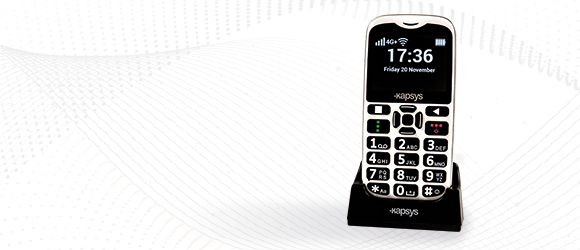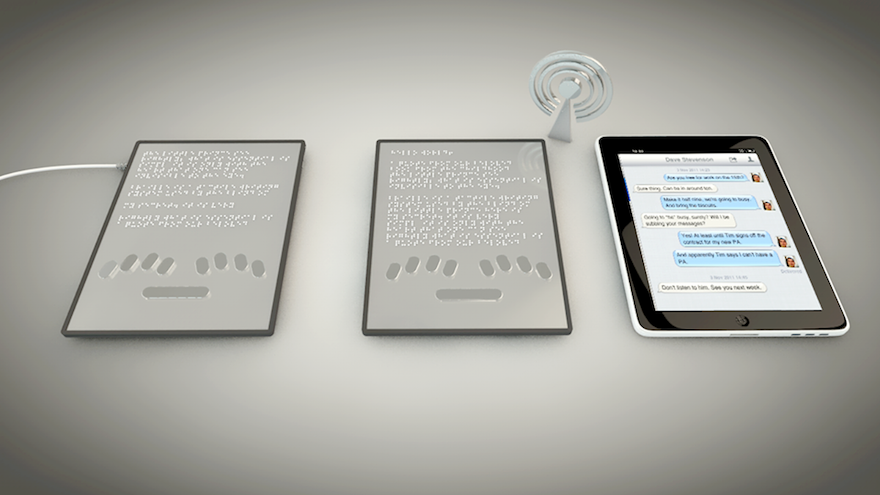Smart Glasses for the Visually Impaired: Innovations in Vision Support
Smart Glasses for the Visually Impaired: Innovations in Vision Support
Blog Article
Empowering Freedom With Assistive Technology for the Blind
The combination of assistive technology right into the lives of people with aesthetic problems stands for a significant improvement in promoting self-reliance and self-sufficiency. From ingenious display viewers to innovative smart walking canes, these tools not just improve everyday navigation and interaction but additionally encourage users to involve meaningfully in numerous aspects of life. As we explore the myriad advantages and real-world applications of these modern technologies, it ends up being vital to check out the underlying variables that add to their effectiveness and the capacity for future advancements in this vital area.
Overview of Assistive Innovation

The advancement of assistive technology is grounded in concepts of inclusivity and empowerment. Technologies in software application, equipment, and sensory enhancements give users with options tailored to their certain requirements. From display viewers that transform text to speech, to responsive devices that convey information via touch, these devices change the method people engage with their environments.
In enhancement to useful applications, assistive modern technology cultivates greater social incorporation and participation in numerous fields, including education and learning and work (Mobility aids for visually impaired users). As study and advancement remain to advance, the possibility for assistive modern technology to additionally improve the lives of visually damaged people continues to be encouraging, leading the means for an extra fair culture where everybody can prosper
Types of Assistive Devices
A range of assistive devices have arised to sustain individuals with aesthetic disabilities, each created to fulfill certain requirements and enhance day-to-day functioning. These devices vary from low-tech services to high-tech technologies, offering diverse choices for users.
Low-tech devices include magnifiers and large-print materials that help in reading and writing. Braille devices, such as Braille slates and stylus pens, enable tactile analysis and interaction. Orientation and mobility help, like white walking canes, help individuals browse their setting safely.
On the greater end of the range, digital zoom systems and screen visitors provide considerable support. Electronic magnifiers allow individuals to enlarge message and pictures on displays, while screen readers transform electronic web content into synthesized speech, helping with accessibility to information on mobile phones and computers.
Smart device applications also play an essential function, supplying functions like text recognition and navigation support. Wearable technology, such as wise glasses geared up with augmented truth, is becoming an appealing device to improve situational awareness.
Advantages of Assistive Innovation
The integration of assistive modern technology substantially improves the lifestyle for individuals with visual disabilities. These innovations encourage users by advertising independence, enabling them to navigate their atmospheres better and do day-to-day jobs with greater convenience. For circumstances, display viewers and magnifying software program enable people to accessibility electronic details, promoting educational and expert possibilities that may have formerly been out of reach.
Additionally, assistive gadgets such as smart walking canes and general practitioners applications give real-time navigation help, improving mobility and security. This increased freedom not only boosts self-worth yet additionally encourages social involvement, enabling eye test cost individuals to participate more fully in their communities.
Assistive innovation also helps with interaction, helping users link with others with voice acknowledgment and text-to-speech applications. This ability is essential for preserving partnerships and accessing essential details.
In addition, the personalization options readily available with numerous assistive innovations ensure that individuals can customize devices to their particular needs, further improving use and performance. In general, the advantages of assistive technology for people with visual problems are profound, advertising a much more inclusive culture where every person can pursue their desires and objectives.
Situation Researches and Success Stories
Highlighting the transformative effect of view it assistive innovation, various situation research studies highlight just how people with visual impairments have efficiently integrated these devices right into their every day lives. One engaging example entails an university student who utilized screen reading software program to browse academic materials and online sources efficiently. This technology not just promoted her education and learning but likewise improved her self-confidence in joining discussions and group tasks.
Another instance study includes a professional that uses a smart device application developed for navigating and object acknowledgment. By utilizing this application, he has regained autonomy in both his individual and job environments, enabling him to commute individually and engage with associates extra efficiently.
In addition, a retiree shared her experience with braille e-readers, which allowed her to access a substantial array of literary works and stay gotten in touch with her community through publication clubs.
These success tales underscore the crucial duty of assistive technology in promoting freedom, improving high quality of life, and advertising social integration for people with visual impairments (Braille displays and notetakers). By welcoming these innovative devices, users can get over obstacles and confiscate possibilities that add to their professional and individual satisfaction

Future Trends in Assistive Innovation
Innovation in assistive innovation is poised to redefine the landscape of assistance for individuals with visual impairments. Emerging fads emphasize the combination of artificial knowledge (AI) and machine discovering, which improve the performance of gadgets that help with navigation and information access. For circumstances, AI-driven applications are currently qualified of interpreting aesthetic data in real-time, enabling users to engage with their environment more separately.
Moreover, the growth of wearable technology useful source is progressing rapidly. Smart glasses furnished with augmented reality (AR) can provide audio descriptions of surroundings, transforming how customers interact with public areas. These devices not only promote freedom yet additionally foster social addition.
Additionally, the Net of Things (IoT) is making homes smarter, allowing for seamless connectivity in between assistive devices and everyday home appliances. This connection equips individuals by making it possible for voice-activated controls and automated feedbacks tailored to private requirements.
Final Thought
In conclusion, assistive modern technology plays an essential function in encouraging people with aesthetic disabilities by boosting their freedom and involvement with their environments. The varied variety of tools and applications available not only helps with navigation and interaction but also advertises social combination and possibilities for expert and personal development. As developments continue in this field, the capacity for improving the lifestyle for those with aesthetic disabilities will certainly broaden, fostering greater freedom and empowerment.

Report this page